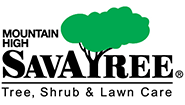
The damage that hail does to our homes and cars is easy to recognize and annoying to deal with. Unfortunately, hail damage doesn’t stop there. Trees, shrubs, and flowers are also vulnerable to the damage that hail inflicts. With the frequency and intensity of the recent storms, we will no doubt be finding evidence of hail damage on trees very shortly. The most obvious sign of hail damage in trees is found on the leaves. Tears, holes, and breaks in the tissue will begin to dry out and brown margins will develop. As the tissue dries, it dies out, stops producing chlorophyll, and becomes non conductive. These damaged leaves may eventually fall off, leaving the tree with the responsibility of producing new tissue that will keep the tree living. One year of repeated hail storms is damaging to the tree, but several years of hail will continue to impact the tree and its amount of stored energy. The stored energy allows the tree to replace damaged tissue, but when the stored energy is depleted the tree will start to show signs of decline. It is very important for the tree to rebuild energy reserves so that it can withstand the next summer of hail storms.
Leaves aren’t the only part of the plant that is damaged in a hail storm. Twigs and branches are also damaged by hail. When the hail slams into twig tissue it opens up wounds that become entryways for pathogens. The most frequent pathogen that enjoys the opportunity that results from hail damage is a fungus known as Cytospora. There are many species of cytospora, but the one that affects Spruce trees in Colorado is one of the most aggressive. Cytospora is carried in the dust and rain particles during storms. When the spores land on open tissue they invade the vascular tissue and begin clogging the plants conductive tissue. Over time the tree will shows symptoms of the infection. Sparse needle canopies, twig dieback and short needle size are all symptoms of an infection. The most apparent sign of an infection is evident in the blue colored sap discharge. When the tell-tale discharge is noticed, it’s time to make a decision about what course of treatment option is best. This decision is best made on a case by case basis with the help of your friendly neighborhood Arborist.
We can help you with your hail damaged trees, click here to send us an estimate request, or call us at 303.232.0666.
